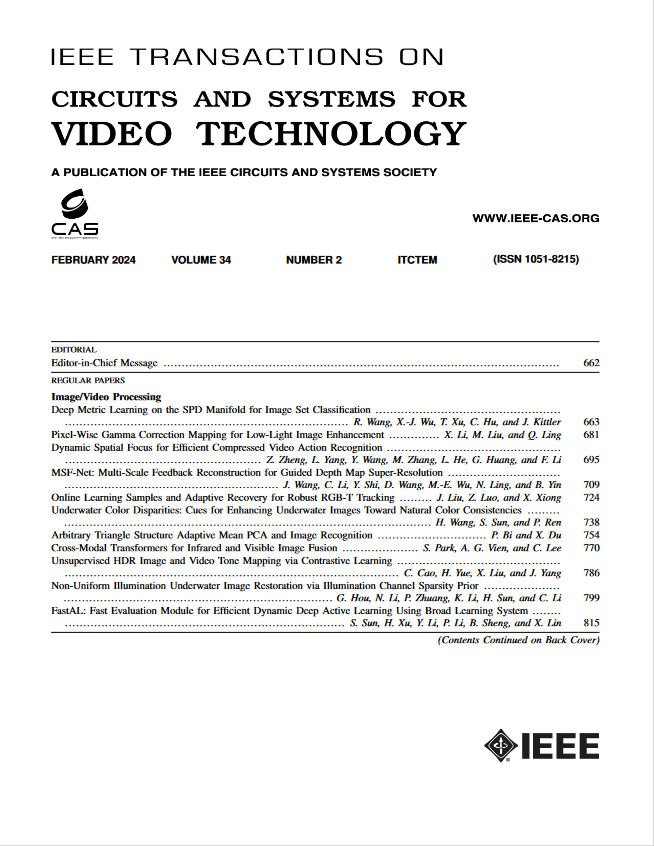Toward Physically Stable Motion Generation: A New Paradigm of Human Pose Representation
IF 8.3
1区 工程技术
Q1 ENGINEERING, ELECTRICAL & ELECTRONIC
IEEE Transactions on Circuits and Systems for Video Technology
Pub Date : 2024-12-16
DOI:10.1109/TCSVT.2024.3518054
引用次数: 0
Abstract
In machine learning, generating realistic human motion is paramount for a range of applications that require lifelike movements. Traditional methods have often overlooked the adherence to physical principles, leading to motion sequences that exhibit unrealistic behaviors such as foot sliding, penetration, and floating. These issues are particularly pronounced in complex tasks like dance choreography, which demand a higher degree of fidelity and realism. To address these challenges, we introduce RF-Rotation, a novel approach to human pose representation that strategically repositions the root joint of the SMPL model to align with both feet, while representing other joints through recursive bone rotations. It not only aligns more closely with the natural dynamics of human movement but also integrates an advanced contact predictor to ascertain the ground contact status of both feet, thereby preventing physically implausible movements on feet. We note that RF-Rotation is compatible with any motion generation tasks, including dance choreography, text-to-motion synthesis, and motion prediction, and can be seamlessly integrated into existing frameworks without modifications. Extensive experiments across three distinct tasks demonstrate the superior performance of RF-Rotation in enhancing the realism and stability of generated motion sequences. This method can significantly reduce foot sliding, floating, and penetration issues, without affecting computational efficiency, underscores its potential to set new standards in human motion generation.走向物理稳定运动生成:人体姿态表征的新范式
在机器学习中,生成逼真的人体运动对于需要逼真运动的一系列应用至关重要。传统的方法往往忽略了对物理原理的坚持,导致运动序列表现出不现实的行为,如脚滑动,渗透和漂浮。这些问题在复杂的任务中尤其明显,比如舞蹈编排,这需要更高程度的保真度和真实感。为了解决这些挑战,我们引入了RF-Rotation,这是一种新的人体姿势表示方法,可以策略性地重新定位SMPL模型的根关节,使其与双脚对齐,同时通过递归骨旋转表示其他关节。它不仅与人类运动的自然动态更紧密地结合在一起,而且还集成了一个先进的接触预测器,以确定双脚的地面接触状态,从而防止身体上不合理的运动。我们注意到RF-Rotation与任何运动生成任务兼容,包括舞蹈编排,文本到运动合成和运动预测,并且可以无缝集成到现有框架中而无需修改。在三个不同的任务中广泛的实验证明了rf旋转在增强生成的运动序列的真实感和稳定性方面的优越性能。该方法可以显著减少足部滑动、漂浮和渗透问题,而不影响计算效率,强调了其在人体运动生成方面树立新标准的潜力。
本文章由计算机程序翻译,如有差异,请以英文原文为准。
求助全文
约1分钟内获得全文
求助全文
来源期刊
CiteScore
13.80
自引率
27.40%
发文量
660
审稿时长
5 months
期刊介绍:
The IEEE Transactions on Circuits and Systems for Video Technology (TCSVT) is dedicated to covering all aspects of video technologies from a circuits and systems perspective. We encourage submissions of general, theoretical, and application-oriented papers related to image and video acquisition, representation, presentation, and display. Additionally, we welcome contributions in areas such as processing, filtering, and transforms; analysis and synthesis; learning and understanding; compression, transmission, communication, and networking; as well as storage, retrieval, indexing, and search. Furthermore, papers focusing on hardware and software design and implementation are highly valued. Join us in advancing the field of video technology through innovative research and insights.

 求助内容:
求助内容: 应助结果提醒方式:
应助结果提醒方式:


